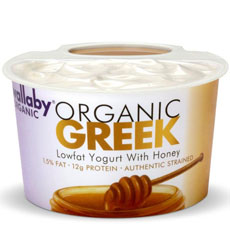|
1. Get a large pot. To begin, get a pot of water on the stove. A large pot is ideal because the more space the egg has to get comfortable, so to speak, the easier it will be for things to turn out right. Add 1 to 2 tablespoons of distilled white vinegar and a couple pinches of salt.
2. Heat the water. Start with the heat on high, as if you were going to bring the water to a boil. You’re aiming for a temperature of 160° to 180°F; but if you don’t have a thermometer, look for little bubbles escaping from the bottom of the pot. The big bubbles from boiling water (212°F) will jostle your egg as it cooks, making it hard to achieve that attractive pillow shape. TIP: I find it is easier (and faster) to get the water to nearly boiling and then lower the heat to attain the ideal temperature.
3. Crack the egg. Once the water is at the right temperature, watch it for a few minutes to make sure the temperature stays constant. Then crack the egg into a glass, mug or dish (Editor’s Note: We use a Pyrex custard cup). This will ensure that any pieces of shell that fall in can be picked out. The best tool to use is actually a larger piece of eggshell. While fingertips, spoons and other utensils create a game of “catch the egg shell,” pushing the shard away, another piece of eggshell actually attracts the shard—almost magically.
4. Lower the egg. Give the pot a few swirls with a slotted spoon, then gently drop in the egg by placing the glass or dish close to the water’s surface. The swirling will help the egg white form tightly, as opposed to dispersing bits of white in the pot. Then let everything sit for a bit; if you mess with the egg or the water before the proteins have a chance to coagulate (set), the egg is likely to come apart. Watch and wait for at least ninety seconds before you do anything else.
5. Check the white. Once the egg looks like it has begun to come together, use the slotted spoon to very gently lift it to the surface of the water. The white is the part you should be checking, as it will cook first. If it is still translucent in some parts, give it another 30-60 seconds and check it again. You want the white to be opaque, and the yolk still runny. You can check the yolk’s consistency by lightly poking it with your finger. If it gives, sort of like a water balloon, you’re in good shape.
6. Remove the egg. Once the white is opaque (and your yolk is still deliciously runny), you’re ready to remove the egg. Use the slotted spoon to lift it gently out of the water, scooping under it to catch all of the white. Rest the spoon on a towel for a moment to drain as much water as possible (this is why you have been using a slotted spoon). When you plate the egg, you can let it slide gently from the spoon or you can delicately flip it over (a useful move if your topside ended up less attractive than your bottom side).
7. Season. Don’t forget to season with salt and pepper, a necessary finish. The best choice is coarsely ground black pepper and sea salt.
Now get cracking!
Need visuals? Watch for a video, tomorrow.
An eggcellent overview of the different types of eggs.
|




